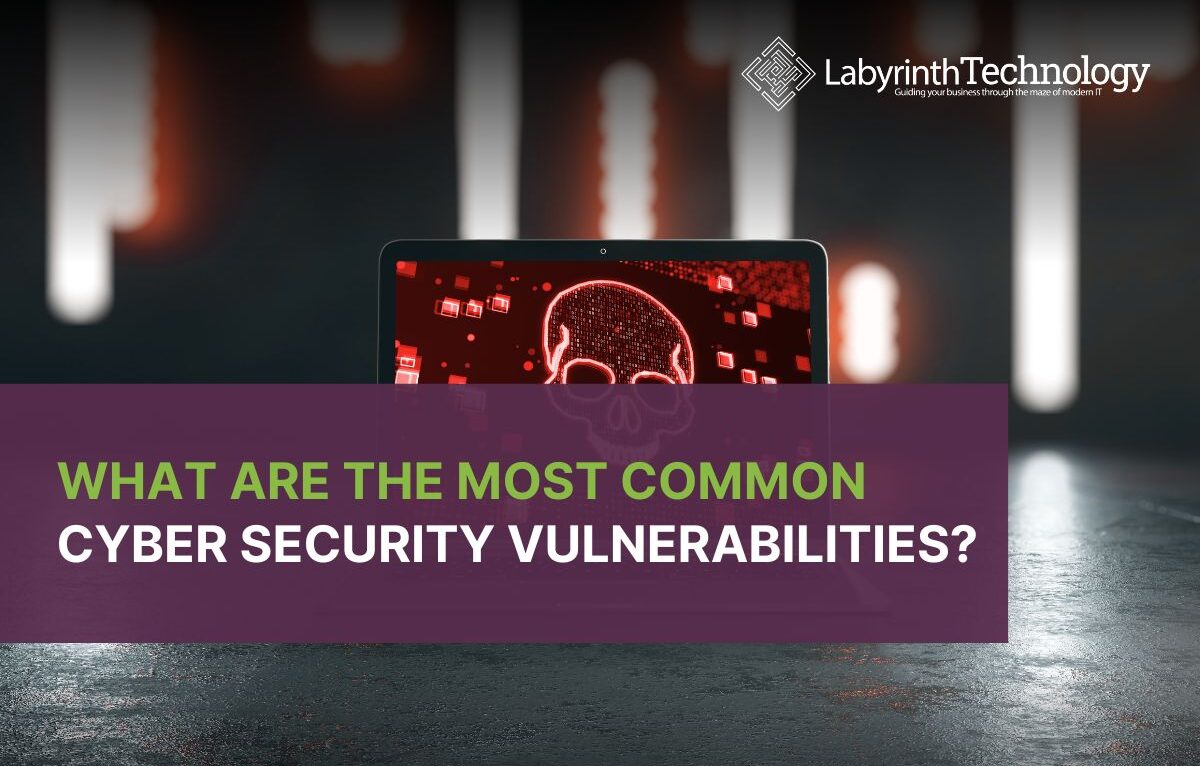
The most common cyber security vulnerabilities are weaknesses in systems, software, and people that pose significant risks to every organisation. They include unpatched software, phishing attacks, weak passwords, misconfigured systems, malicious code, cross site scripting, zero day vulnerabilities, human vulnerabilities, poor vulnerability management, and outdated security measures. Each of these can be exploited by malicious actors to gain access to your computer system, steal sensitive data, or cause data breaches. Strong risk management and modern security measures are essential to protect your business.
If you search for the most common types of cyber security vulnerabilities, you will see a mix of technical issues, process gaps, and human vulnerabilities. Each one represents a flaw that could be exploited by a threat actor. These weaknesses create an increased risk of cyber attacks, and the potential impact includes financial loss, a compromised bank account, or exposure of sensitive data.
So, what are the 10 most common cyber security vulnerabilities, how do they occur, and what can you do to defend against them?

When you skip software updates, you leave behind known vulnerabilities. Attackers scan the internet daily, using automated tools to find unpatched software in existing systems. Once they find it, they can gain access without much effort.
The fix is straightforward but critical. Apply patches as soon as they are released, and build a strong vulnerability management process. This means your system administrators regularly scan, report vulnerabilities, and update all operating systems and applications. Without it, your security posture will quickly weaken.
Phishing is one of the most common types of cyber attacks. A fake email or text tricks users into clicking a bad link or sharing login details. Once an authenticated user falls for it, an attacker can drop malicious code, steal data, or even take control of your system.
The defence is layered. Train staff to spot scams, filter emails, and enforce multi factor authentication. Even if a password is stolen, that extra step blocks malicious actors from easy access. Awareness is your strongest protection against this kind of threat.

Passwords remain a major security risk. Weak or reused credentials can be cracked in seconds, giving attackers full access. Once they break one account, they often exploit it to move through an entire network.
Best practice is to require long, unique passwords, paired with multi factor authentication. Password managers also help users generate and store them safely. These small steps make it far harder for a threat actor to compromise your accounts.
Even the best security measures fail if your systems are set up incorrectly. A misconfiguration, such as leaving a database open to the internet, creates a hidden flaw that could be exploited.
To reduce this cyber risk, review and audit configurations regularly. Your system administrators need clear processes to avoid mistakes. Regular testing ensures that no design flaws or missed settings are creating an invisible doorway for attackers.

Malicious code is designed by attackers to damage or hijack your computer system. It could be malware, ransomware, or spyware delivered through an email, file, or download. Once it runs, it can quickly compromise your data and spread across your network.
Protecting against this requires antivirus software, strict permissions for users, and constant monitoring. Combined with up-to-date patches and software updates, these steps make it harder for malicious actors to drop code into your system.
Cross site scripting (XSS) is a web application vulnerability. A threat actor injects malicious code into a trusted site. When users visit, their data may be stolen without them realising.
The fix lies with developers. By following fundamental concepts of secure coding and testing, they can stop these exploited vulnerabilities before release. For businesses, regular penetration testing is essential to protect sensitive data and keep your online services safe.

Zero day vulnerabilities are newly discovered weaknesses in software or operating systems. Because there is no patch yet, the likelihood of an attack is high, and the potential impact can be severe.
You cannot stop them from existing, but you can lower the risk. Use layered defences such as intrusion detection, risk management frameworks, and segmented networks. This way, even if a zero day is triggered, the attackers cannot easily move across your entire system.
Most cyber security problems come down to people. Mistakes, poor judgement, or lack of awareness create human vulnerabilities that malicious actors exploit on a daily basis.
The solution is knowledge. Train your users regularly, create clear policies, and encourage them to report vulnerabilities. When staff understand the factors behind cyber risk, they are far less likely to hand over easy access to your system.

Many organisations fail because they do not have a solid vulnerability management process. Without scanning, testing, and fixing, bugs and design flaws pile up in your existing systems.
Good risk management means creating a cycle: identify, prioritise, fix, and retest. By embedding this process, you limit exploited vulnerabilities and protect the integrity of your computer system.
If your only protection is a firewall from years ago, you are at an increased risk. Old defences are easy for malicious actors to bypass, especially with today’s common vulnerability exploits.
Modern security measures include endpoint monitoring, encryption, multi factor authentication, and reliable backups. By updating your tools and processes, you keep your security posture aligned with current threats.
At Labyrinth Technology, we help businesses defend against the most common cyber security vulnerabilities. We know how overwhelming it can feel to manage every security risk while keeping your company running. That is why we provide clear, practical support that strengthens your security posture and reduces your cyber risk.
We focus on proactive protection. That means patching unpatched software, defending against phishing attacks, helping your team avoid human vulnerabilities, and guiding system administrators with strong processes. We also work closely with developers to secure web applications and prevent cross site scripting or other design flaws.
By combining expert knowledge with hands-on help, we give you confidence that your sensitive data and computer systems are safe from malicious actors.
Every vulnerability is a weakness, and if ignored, it will eventually be exploited. From phishing attacks and malicious code to zero day vulnerabilities, the potential impact ranges from a stolen bank account to a full data breach.
You cannot control when attackers look for flaws, but you can control how ready you are. With the right security measures, ongoing risk management, and expert support, you can reduce the likelihood of an attack and protect your organisation’s future.
Labyrinth Technology is here to help you assess risk, improve your security posture, and close the gaps that pose significant risks to your business. Contact us today to keep your business safe.
Empowering London Businesses with Efficient IT Solutions to Save Time and Stay Ahead of the Competition.